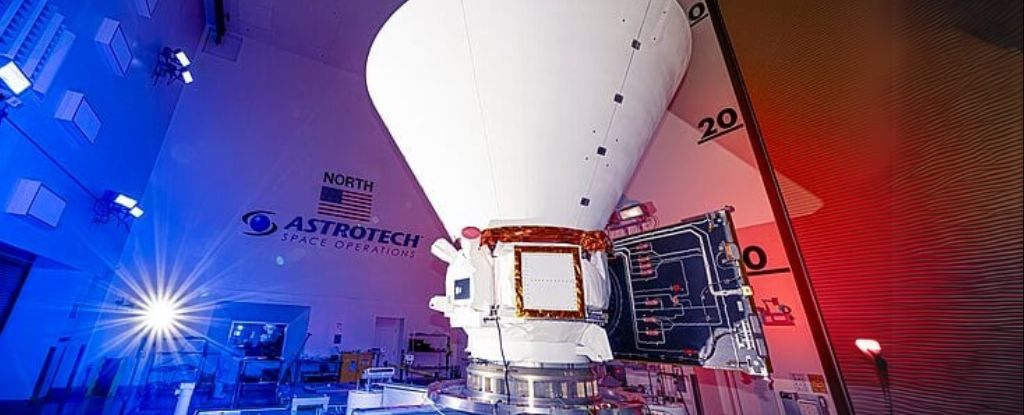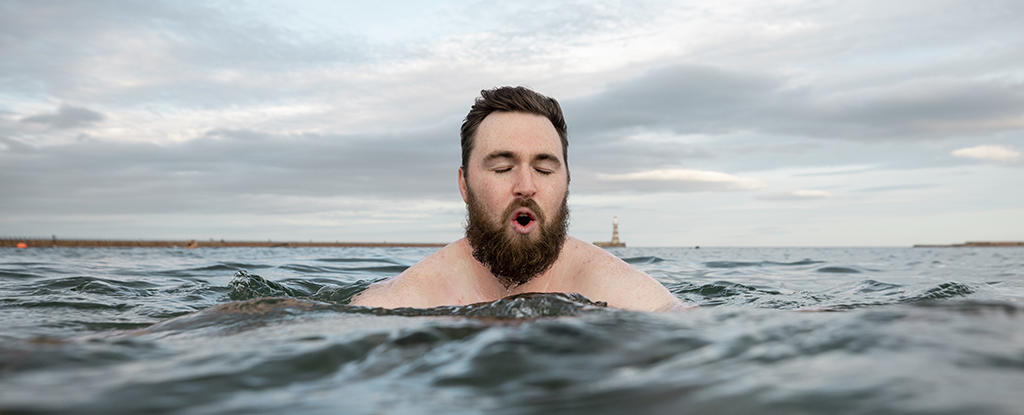Snowmobiling Through Yellowstone Is Hard, But Worth Freezing For
I rode Ski-Doo snowmobiles ranging from 60 to 180 hp for two full days, in terrain varying from flat frozen roads to 7 feet of snow at 9,000 feet in elevation. I was exhausted. The post Snowmobiling Through Yellowstone Is Hard, But Worth Freezing For appeared first on The Drive.

After racing shifter karts, riding dirt bikes, and doing track days in cars, I thought sitting on a snowmobile and cruising around Montana would be cool and casual. Cool, yes—cold, really. But buzzing through snow-covered Yellowstone on high-powered Ski-Doos was physically and mentally intense, exhilarating, and exhausting. It kicked my butt and I loved it.
Maybe the fact that I’m older, out of shape, and not as used to being manhandled by machines with wicked power-to-weight ratios had something to do with it, but, this ride through a park was no walk in the park.
You can read about my experience riding half a dozen Ski-Doo models across Yellowstone National Park and West Yellowstone here. I go into detail about the various models I rode, how they work, and what kind of riding they’re for—y’know, deep snow, trail, utility, etc. Most importantly, I elaborate on how my entire perspective on snowmobiles changed after that experience, and why.




Why It’s So Physical
Piloting a go-kart, side-by-side, personal watercraft, or just about any motorized “toy” involves a certain level of physicality that most people aren’t used to. Why? Because most of us live pretty civil lives in our normie cars with comfy seats, plush suspensions, power steering, windshields, heaters, AC, and so forth. Unless you drive a Lotus Elise or Alfa Romeo 4C, driving a car isn’t a workout.
My first a-ha moment aboard a snowmobile was when I realized how much effort it took to steer the thing. The handlebar controls two skis up front, which, in theory, tell the machine where to go. In reality, though, if you really want to turn quickly and sharply, you must take your butt off the saddle and hang it over the side. In some of the smaller and more agile Ski-Doos it’s not too bad, but one specific machine I rode weighed nearly 700 pounds dry, so that sucker required effort. And because having to shift my weight to turn is not something I typically have to do in my Honda Civic, it took me a good while to get used to that.
Something else I found unusual was the throttle. It’s not like a motorcycle where you twist the grip to accelerate, but more like a waverunner, where you operate a tiny lever with your right thumb. It’s fine for the most part, but after riding for several hours, your thumb really starts to feel it. Plus, when riding on uneven terrain at speed, it was a big challenge to maintain a steady throttle input while using my other four fingers to hang onto the grip. Oftentimes I had to choose between hanging on for dear life or accelerating. Surely, this gets easier with practice.




And then there’s the weather. There’s a reason why most people (except the Swedes and Finns) stay indoors during the winter. Cold weather wreaks special havoc on things, and you have to learn to roll with Mr. Frost’s punches if you want to have fun outdoors. Not only did I have to learn how a snowmobile works, as well as the dynamics of riding one, but I had to do so while battling the cold. I live in the Midwest and snow doesn’t bother me, but it hits differently when you’re going fast in an open-air vehicle.
Things like the wind, snow, ice, rooster tails and exhaust from the snowmobile in front of you, chapped lips, and more annoyingly, foggy glasses are all things you must deal with when snowmobiling. And the challenges don’t end when you hop off the machine. In one instance, I tried to dismount my Ski-Doo, but instead, I sank into waist-deep snow. The more I tried to get out, the more I got stuck. It was like quicksand in a cartoon.
There was one instance where I didn’t use the proper technique to turn around on a steep hill, so I ended up falling to one side and diving straight into the snow, while my Ski-Doo rolled over me and tumbled a few feet down the hill. Luckily, I was submerged in over seven feet of the white stuff, so I wasn’t hurt when it toppled over me. If you think that was the shittiest part of that scenario, you’d be wrong. The worst part was getting myself out of my snow grave and having to flip a 500-pound snowmobile onto its right side. That’s no easy feat when you’re not standing on solid ground, so you can’t get the right footing or momentum. On top of that, you’re covered in snow, soaked in melting snow, and every element is making a tough task even tougher.
After two days of riding, but specifically the second day—which included riding a hella-fast, 180-horsepower Ski-Doo Freeride at nearly 80 mph on deep snow—I was exhausted. Every muscle in my body was tender, and the smell of two-stroke engines permeated my nose, mouth, throat, and lungs.



Snowmobiling Done Right
Everything I just described is part of being new to snowmobiling. The learning curve can be steep, especially considering I rode over half a dozen machines in two days, each with unique qualities. The riding terrain also varied dramatically, from the easy-to-follow frozen roads of Yellowstone and tight windy trails of Two Top Mountain (at 9,000 feet of elevation, nonetheless) to not following any trails and just exploring our way through the woods. Most people’s intro to snowmobiling would be way less intense.
However, I was lucky enough to do all this with the Ski-Doo team, which meant having the right coaching.
Steve Cowing is the media relations manager for BRP’s snowmobile division, but most importantly, he is an absolute rockstar on the saddle. This man has run pro snowmobiling racing teams in the past, so he knows a thing or two about going fast in the snow. His advice was priceless, especially when it came to learning the machines and dealing with deep snow, where getting them stuck and buried was extra easy.



Besides the guidance he and his team offered, I was provided with the right gear to make sure I was comfortable, safe, and of course, warm. Doing any outdoor activity with the wrong gear isn’t just silly; it’s downright unsafe. And despite having owned my fair share of quality racing gear over the years, I was blown away by the quality and attention to detail of Ski-Doo’s gear.
Here’s my full gear list:
- Oxygen Flow Heated Helmet with Electric Visor
- Enduro Highpants
- Enduro Jacket
- Insulated Grip Gloves
- Leather Tec+ ULTRA Boots
- Active Balaclava
I’ll start with what I found to be the most impressive bit of kit: the Oxygen helmet. For starters, I didn’t know heated helmets existed. That’s incredible. Some auto racing helmets can be hooked up to cool boxes and the sort, but heat? Had no clue. Also, I had no idea electric visors existed either, but they’re really awesome and make a lot of sense for snowmobiling. An electric current flows through the visor’s coating to keep moisture from building up, such as snow or ice on the outside and fog or condensation on the inside. This model also features a full-face visor that flips up, but also a hidden, flip-down amber visor to help with snow glare or sunlight. It also had a lot of vents and a neat air scarf, which kept cold hair from coming in through the neck or chin.

As an XXL guy, I was surprised that Ski-Doo carried the right size clothing for me because it can often be difficult to find specialized gear in my size. However, the Enduro pants and jacket didn’t just fit me; they were actually super comfortable, and most importantly, they played a crucial role in keeping me warm and dry. They were stretchy, had the right layers, vents, and the clasps and zippers were super solid. The jacket had a ton of pockets for stuff, but not too many that you forgot where you put stuff in. I had arrived prepared with some alternatives just in case I couldn’t find my size, but I’m glad I didn’t have to use them because they wouldn’t have performed nearly as well.
Gloves are important. Without the right gloves, your hands would freeze and fall off, but they’re also designed to protect you from a fall. While the gloves I used from Ski-Doo were slightly big on me, they were extremely cozy and flexible, so I didn’t feel like I had Robocop hands. And speaking of robots, the Tec+ Ultra boots were super sharp, easy to put on, warm, and also very comfortable. I didn’t feel like a robot walking on them. I had to do a bit of trekking at various stages, and they were great, though if you’re going to be walking on ice, I recommend some removable treads.

It Was Totally Worth It
Despite the intense crash course into snowmobiling and how sore my body was for three days after my excursion, I feel super lucky to have learned so much about something I knew so little about. The instruction, the guidance, the gear, the amazing journey through Yellowstone and other areas—it was a complete immersion into the world of Ski-Doo.
Yes, it’s very physical, and depending on how hard you send it, it can be exhausting. However, with the right attitude, preparation, and gear, riding a Ski-Doo for 16 hours over two days can be a ton of fun. If you’ve never done it, I hope reading about my experience motivates you to get out there and hit the trails.
Email the author at jerry@thedrive.com
The post Snowmobiling Through Yellowstone Is Hard, But Worth Freezing For appeared first on The Drive.












































































